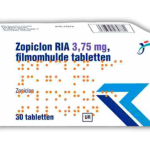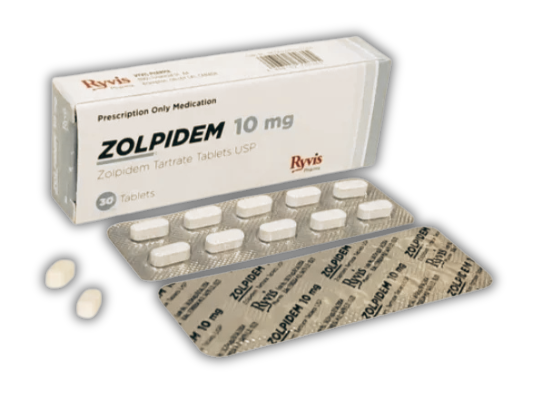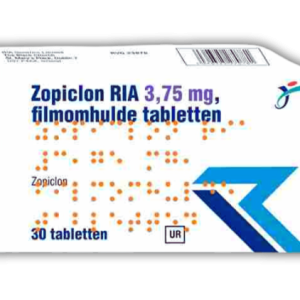Description
Zolpidem is a widely prescribed non-benzodiazepine hypnotic medication. It’s become one of the most studied sleep aids in modern medicine, and new research keeps revealing insights about its efficacy, safety, and risks.
Healthcare professionals and researchers aiming to publish about zolpidem need to understand the latest clinical data. They also need to focus on clear, effective scientific writing.
Recent studies show zolpidem carries significant risks, like increased fall rates (OR 4.28), hip fractures (RR 1.92), and complex sleep behaviours. There are also gender-specific differences in drug metabolism, which have led to new dosage recommendations.
These findings make it crucial to present zolpidem research with scientific rigour and clarity. The medication’s widespread use and changing risk-benefit profile keep the conversation evolving.
Writing about zolpidem means paying close attention to new research, using solid study methods, and communicating both benefits and risks. This guide explores how to craft well-researched scientific articles about zolpidem, from understanding current clinical evidence to picking the right journals for publication.
Current Research and Scientific Understanding of Zolpidem
Recent research has revealed concerning patterns of zolpidem abuse and withdrawal symptoms. There are documented cases where people escalated their doses to as much as 6,000 mg daily.
Studies now focus on understanding why dependency develops and how to improve detoxification protocols. It’s a challenging field, and the numbers are worrying.
Latest Clinical Trials and Findings
Clinical trials have looked at zolpidem’s efficacy compared to behavioural treatments for insomnia. One randomised controlled trial compared behavioural therapy (n = 104) with zolpidem therapy (n = 107) as first-stage treatments.
The study used sublingual zolpidem at 5-10 mg nightly at bedtime. Behavioural therapy involved sleep restriction and stimulus control techniques.
Key findings from recent case studies:
- Abuse cases with consumption up to 6,000 mg daily
- Withdrawal symptoms like seizure-like episodes and nystagmus
- Detoxification success using clonazepam replacement therapy
A case series from clinical and forensic settings in Italy has shed light on misuse patterns. Researchers are documenting a phenomenon users call ‘Z-trip.’
Meta-analyses in elderly populations have revealed safety concerns. Despite common prescriptions for older adults, there aren’t many randomised controlled studies in this group.
Hypothesis Development and Research Questions
Current research hypotheses focus on understanding zolpidem’s addiction mechanisms. Scientists want to know why some people develop tolerance and need extreme doses while others stick to therapeutic amounts.
Primary research questions:
- Which genetic factors predispose patients to zolpidem dependency?
- How does long-term use affect GABA receptor sensitivity?
- What withdrawal protocols minimise seizure risk?
Researchers are also looking at gender and abuse potential. Some studies suggest female patients may have higher active zolpidem concentrations due to differences in albumin binding.
The paradoxical awakening effect seen in some patients has sparked new hypotheses. Scientists are now exploring zolpidem’s potential in treating consciousness disorders.
There’s growing interest in optimal detoxification protocols. The use of clonazepam monotherapy without tapering zolpidem is a novel approach that needs more investigation.
Data Collection Methods
Researchers use several data collection approaches to study zolpidem’s effects. They often use Pearson’s chi-square tests to compare dosage patterns between genders and check for associations between adverse reactions and categorical variables.
Student’s t-tests help compare mean ages for adverse events. This way, they can spot age-related vulnerability patterns.
Case series methodology is valuable for documenting extreme abuse cases. Researchers collect detailed patient histories, dosage progression, and withdrawal symptom timelines.
Prospective, placebo-controlled, double-blind, single-dose, crossover studies are considered the gold standard for zolpidem research. These methods help isolate zolpidem’s effects from placebo responses.
Data collection focuses on:
- Adverse event frequency and severity
- Dosage escalation patterns
- Withdrawal symptom chronology
- Treatment response rates
Systematic literature reviews add to primary research. Researchers manually search key journals to find studies that databases might miss.
Peer Review and Publishing Process
Scientific papers on zolpidem go through rigorous peer review before publication. Manuscripts must show solid methodology and clinical relevance to get accepted by medical journals.
Publishing standards demand detailed case documentation and statistical analysis. Projects on extreme abuse cases face extra scrutiny over patient confidentiality and ethics.
The peer review process keeps pointing out gaps in elderly patient research. Reviewers often highlight the need for age-specific clinical trials, given how often zolpidem is prescribed to older adults.
Publication requirements:
- Thorough methodology descriptions
- Statistical analysis of findings
- Ethical approval documentation
- Conflict of interest disclosures
Recent manuscripts have stressed the need for comprehensive patient assessment tools. Peer reviewers want better screening methods for addiction risk.
Scientific journals are prioritising research that tackles practical clinical concerns, especially around dependency and withdrawal management.
Efficacy and Safety of Zolpidem According to Recent Data
Clinical studies show zolpidem works well for insomnia but raise serious safety concerns. Complex sleep behaviours can happen even at therapeutic doses.
Systematic reviews reveal promising outcomes but also highlight adverse events that require careful clinical consideration.
Therapeutic Benefits and Indications
Zolpidem is effective for treating primary insomnia in adults. Clinical trials show it improves sleep onset and duration compared to placebo.
The drug acts as a sedative-hypnotic with rapid onset and short duration. Studies report effectiveness within 15-30 minutes of taking it.
Newer research hints zolpidem might help with some neurological conditions beyond insomnia, like movement or consciousness disorders. But honestly, more studies are needed before making any big claims.
Primary indications:
- Primary insomnia in adults
- Short-term sleep difficulties
- Sleep onset problems
Extended-release formulations can help maintain sleep through the night. However, these versions come with a higher risk of next-morning cognitive impairment, especially in women.
Elderly patients need lower doses because they metabolise the drug more slowly. Doses of 5mg are usually recommended to reduce side effects.
Zolpidem works well when combined with cognitive-behavioural therapy for insomnia. This combo often gives better long-term results than medication alone.
Analysis of Results Section in Published Studies
Systematic reviews on zolpidem efficacy show mixed but generally positive results. One large study with 211 participants compared zolpidem to behavioural therapy for insomnia.
Randomised controlled trials report that zolpidem improves sleep parameters, like reducing sleep onset time and increasing total sleep duration.
Key findings from recent studies:
- Sleep onset improved by 15-30 minutes
- Total sleep time increased by 60-90 minutes
- Sleep quality ratings improved significantly
Clinical trial data shows therapeutic doses range from 5-10mg nightly. The 10mg dose works better but also raises the risk of side effects.
Postmarketing studies report somnambulism rates of 0.3% to 1%. These numbers come from credible sources tracking adverse events in clinical practice.
Extended-release formulations keep working through the night, but studies show higher risks of next-day cognitive impairment. It’s a tradeoff worth considering.
When compared to other sleep meds, zolpidem shows similar efficacy but may cause fewer dependency issues than benzodiazepines. That’s why many consider it a first-line treatment.
Adverse Events and Safety Considerations
Complex sleep behaviours are the most serious safety concern with zolpidem. These can happen even at the lowest recommended doses.
The FDA added a boxed warning in 2019 about serious injuries and deaths from these behaviours. This warning covers all zolpidem formulations.
Common complex sleep behaviours:
- Sleepwalking and somnambulism
- Sleep-related eating disorders
- Sleep driving
- Sleep cooking and shopping
A systematic review of 148 patients found probable links between zolpidem and complex sleep behaviours in 88% of cases. Most involved sleepwalking or sleep-related eating disorders.
Neuropsychiatric adverse events happen regularly with zolpidem. These include hallucinations, sensory distortions, delirium, and amnesia.
Women are at higher risk for next-morning cognitive impairment, especially with extended-release forms. The FDA recommends avoiding driving or other mentally demanding activities the day after taking extended-release zolpidem.
Drug interactions can increase adverse event risks. Using zolpidem with fluvoxamine or valproic acid may boost the chance of complex sleep behaviours.
Healthcare professionals need to weigh benefits against risks when prescribing zolpidem. Monitoring patients for unusual sleep behaviours is essential throughout treatment.
Best Practices in Scientific Writing about Zolpidem
Writing about zolpidem in a scientific context means following established reporting standards, using proper citations, and ensuring quality. Authors should structure their methodology sections clearly and provide comprehensive background information, using expert insights to build credibility.
Reporting Standards and Citation Style
Pharmaceutical research on zolpidem requires strict adherence to international guidelines. Authors should use CONSORT standards for randomised controlled trials and STROBE guidelines for observational studies.
Citation Style Requirements:
- Use numbered citation systems (Vancouver style) for medical journals
- Include DOI numbers for all digital references
- Cite original clinical trial data, not just review articles
- Reference FDA and EMA approval documents when discussing regulatory matters
Proper citation of zolpidem’s pharmacokinetic data means using peer-reviewed sources from reputable journals. Authors need to distinguish between immediate-release and extended-release formulations in their citations.
Key Citation Elements:
- Drug nomenclature (zolpidem tartrate vs zolpidem)
- Dosage forms and strengths
- Study population demographics
- Primary and secondary endpoints
Citation style should stay consistent throughout the manuscript. Zolpidem research updates quickly, so authors should prioritise newer studies and formulations.
Structuring Methods and Background Information
The methods section for zolpidem studies needs precise details about drug administration. Authors should specify timing, dosage, and any co-administered medications to ensure others can reproduce the study.
Essential Methods Components:
- Participant selection criteria (age, sleep disorder type, co-morbidities)
- Zolpidem formulation and manufacturer details
- Administration timing relative to bedtime
- Washout periods for cross-over studies
- Sleep assessment tools (polysomnography, actigraphy, questionnaires)
Background sections should set the clinical context for zolpidem use. This means discussing how common insomnia is, current treatment guidelines, and gaps in what we know.
Authors need to describe zolpidem’s mechanism of action at GABA-A receptors. They should explain how this differs from other hypnotics and why that matters for their research question.
The background should move logically from general insomnia concepts to specific zolpidem applications. This helps clarify the rationale for the study objectives.
Quality Assurance through Footnotes and Reference Management
Footnotes help keep zolpidem research papers accurate. They add clarifications without breaking up the main text.
Effective Footnote Uses:
- Trademark acknowledgements (Ambien®, Stilnoct®)
- Manufacturer details for drug preparations
- Statistical software versions and settings
- Conflicts of interest declarations
- Protocol deviations or amendments
Tracking references gets tricky when you’re dealing with multiple zolpidem formulations. Authors need to follow studies across different populations, doses, and outcomes.
Digital reference managers really help here. They keep citations accurate and cut down on mistakes in author names or publication details.
Reference Quality Checks:
- Check journal impact factors and indexing
- Confirm author affiliations and credentials
- Watch out for retracted publications
- Validate clinical trial registration numbers
Major sleep medicine journals and regulatory reports offer the most credible sources for zolpidem research. Authors should steer clear of using conference abstracts as primary evidence.
Utilising Expert Interviews and Writing Skills
Expert interviews boost the credibility of zolpidem research manuscripts. Sleep medicine specialists can add clinical context that strengthens the discussion.
Interview Target Groups:
- Clinical pharmacologists who know hypnotics
- Sleep disorder specialists with real-world prescribing experience
- Regulatory affairs experts familiar with zolpidem approvals
- Patient advocacy representatives
Good writing skills matter too. Authors need to explain zolpidem’s receptor selectivity in a way that’s both clear and scientifically accurate.
Key Writing Techniques:
- Define technical terms the first time they appear
- Use active voice when describing methods
- Keep tense consistent throughout
- Use parallel structure in lists and comparisons
Expert input helps authors avoid common mistakes about zolpidem’s safety profile. Specialists can clarify which patients are suitable and who shouldn’t use the drug.
Bringing in expert perspectives means careful attribution and context. Authors should make it clear when statements reflect clinical experience instead of published data.
Selecting Target Journals and Manuscript Submission for Zolpidem Research
Getting zolpidem research published starts with picking the right journal. You need to match your work to the journal’s scope and prepare the manuscript strategically.
The process means weighing the novelty of your research and following the specific submission rules for pharmaceutical studies.
Choosing the Appropriate Target Journal
Researchers should look at their zolpidem study’s novelty, relevance, and appeal before picking a journal. If you’re exploring new uses or mechanisms, high-impact journals are worth a shot. More incremental findings might fit better in mid-tier publications.
Sleep medicine journals are top choices for zolpidem research. Sleep Medicine Reviews, Journal of Sleep Research, and Sleep often publish these studies. If you’re focused on mechanisms, pharmacology journals like Clinical Pharmacology & Therapeutics work well.
The journal’s scope and aims need to fit your research. Neuropsychopharmacology journals want studies on cognitive effects, while clinical journals look for patient outcomes.
Check what the journal has published recently. If they’ve run similar zolpidem studies, that’s a good sign. Acceptance rates matter too—big-name journals often accept only 10-20% of submissions.
Impact factor is always a balancing act. Specialized sleep journals might match your topic better even if their impact factor isn’t as high as broader medical journals.
Publishing Process and Manuscript Preparation
Start manuscript prep by reviewing the journal requirements for pharmaceutical research. Most journals expect clinical trial registration for zolpidem studies in humans. If it’s a randomized controlled trial, CONSORT guidelines apply.
Ethics are front and center. Because zolpidem is a controlled substance, authors need to describe methods in detail. Clinical studies must include institutional review board approval.
Manuscript structure sticks to the basics: introduction, methods, results, and discussion. In methods, authors should spell out zolpidem dosing and when they administered it. Safety monitoring needs a thorough description.
To prep for peer review, authors should anticipate concerns about abuse and dependency. Addressing limitations up front helps. Supplementary safety data always makes a submission stronger.
Publication charges can really vary. Open access boosts visibility but comes with hefty fees. Green open access options let you archive your work while still publishing traditionally.
Frequently Asked Questions
Healthcare providers and patients ask a lot about Zolpidem—its clinical effects, drug interactions, dependency risks, and safety in different groups. Newer research keeps updating guidance on efficacy and dosing.
What are the clinically proven effects of Zolpidem on sleep quality and duration?
Clinical trials show that Zolpidem helps people fall asleep 15-30 minutes faster than placebo. Most patients get to sleep quicker and wake up less often during the night.
Sleep efficiency usually improves by about 10-15%. People with chronic insomnia often get 30-60 more minutes of sleep per night.
Polysomnographic studies say Zolpidem maintains normal sleep architecture better than old-school benzodiazepines. It keeps REM and non-REM sleep in healthy balance.
How does Zolpidem interact with other medications and what are the risks of such interactions?
Central nervous system depressants pose the biggest risks when mixed with Zolpidem. Combining it with alcohol, opioids, or benzodiazepines can cause dangerous breathing problems.
Antidepressants like fluoxetine and sertraline might boost Zolpidem blood levels. Doctors often lower Zolpidem doses if patients take these meds together.
Some antibiotics, for example ciprofloxacin, can make Zolpidem’s sedative effects stronger. On the flip side, rifampin speeds up Zolpidem metabolism and makes it less effective.
What are the latest findings regarding the long-term use of Zolpidem and potential dependency issues?
Recent studies suggest people build tolerance to Zolpidem’s sleep effects after 2-4 weeks of nightly use. Folks might need higher doses to get the same results.
Physical dependence sometimes develops after just 7-10 consecutive days. Withdrawal brings rebound insomnia, anxiety, and tremors if you stop suddenly.
Intermittent use seems to lower dependency risks compared to nightly dosing. More providers now suggest “as-needed” schedules.
What demographic groups are at a higher risk of experiencing adverse effects when using Zolpidem?
Elderly patients have higher risks of falls, confusion, and next-day grogginess. The recommended dose for those over 65 is half that of younger adults.
Women process Zolpidem more slowly, so blood levels run higher. Regulators now recommend lower starting doses for women.
People with liver disease clear the drug more slowly and see more side effects. Those with respiratory issues like sleep apnea face extra risks for breathing trouble.
How does Zolpidem’s efficacy compare with other hypnotic medications in treating insomnia?
Direct comparisons show Zolpidem works about as well as other Z-drugs like zopiclone and zaleplon for getting to sleep. Zolpidem usually lasts longer than zaleplon, though.
Compared to benzodiazepines, Zolpidem causes less next-day drowsiness and fewer cognitive side effects. It also seems to cause less tolerance over time.
Meta-analyses suggest Zolpidem outperforms antihistamine sleep aids in both effectiveness and side effect profiles. It tends to deliver more reliable sleep improvements across different patient groups.
What are the most recent updates on safe dosage guidelines for Zolpidem according to the latest research?
Current guidelines set the maximum dose at 5mg for women. Men can take 5-10mg, but that’s about it.
These recommendations come from newer data showing that men and women metabolize Zolpidem differently. It’s honestly pretty interesting how much sex can affect drug processing.
Elderly folks shouldn’t go over 5mg, no matter their sex. Their bodies clear the drug more slowly, so the risk of side effects goes up.
Doctors usually keep a closer eye on older patients for any problems. It’s a bit more hands-on with that group.
Recent studies back limiting Zolpidem use to two to four weeks when treating acute insomnia. If someone needs it longer, doctors really have to weigh the risks and benefits and check in often.



Reviews
There are no reviews yet.